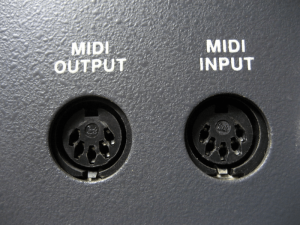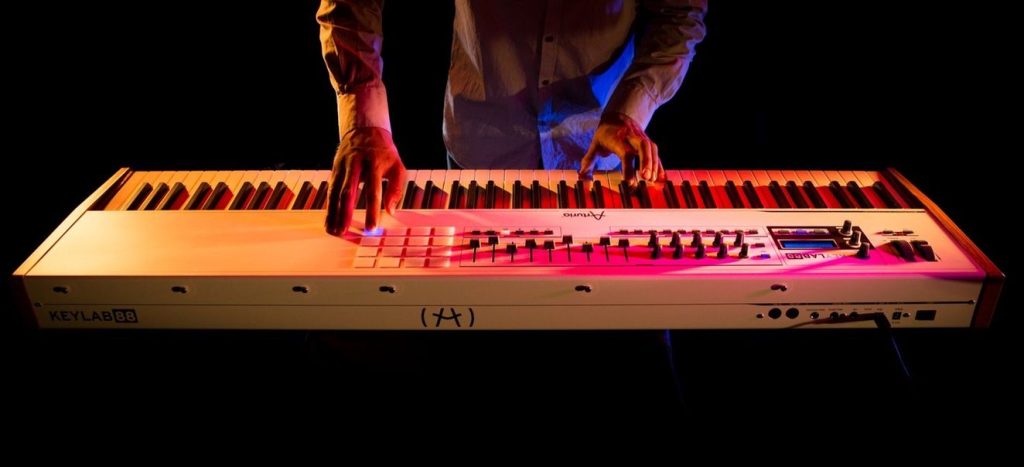MIDI Interface
MIDI stands for Musical Instrument Digital Interface. It is a technical standard that describes a protocol, digital interface, and connectors that allow electronic musical instruments, computers, and other related devices to communicate with each other.
MIDI technology enables devices such as keyboards, synthesizers, drum machines, and computers to control and synchronize with each other, facilitating the creation, recording, and playback of music. MIDI data typically consists of instructions for playing notes, adjusting parameters like volume and pitch, and other musical control messages. MIDI has been widely used in music production, live performances, and other applications since its introduction in the early 1980s.
A MIDI interface is a device or system that enables communication between MIDI-equipped musical instruments, computers, recording equipment, and other electronic devices. It serves as a bridge for transmitting MIDI data between various devices, allowing them to interact and synchronize with each other. Here’s a detailed introduction to MIDI interfaces, along with their applications:

Components of a MIDI Interface:
- Input and Output Ports: MIDI interfaces typically feature MIDI input and output ports, often in the form of MIDI connectors (5-pin DIN connectors or MIDI jacks) or USB ports.
- Conversion Circuitry: MIDI interfaces include circuitry for converting MIDI signals between digital and electrical formats. This conversion ensures compatibility between different MIDI-equipped devices.
- Signal Processing: Some MIDI interfaces may include signal processing capabilities for tasks like MIDI routing, filtering, merging, or splitting.

Applications of MIDI Interfaces:
- Music Production and Recording: MIDI interfaces are widely used in music production studios and home recording setups. They allow musicians to connect MIDI keyboards, synthesizers, drum machines, and other MIDI controllers to computers or hardware sequencers for recording and composing music.
- Live Performances: MIDI interfaces are essential for live performances, enabling musicians to control and synchronize multiple MIDI-equipped instruments and devices on stage. They facilitate the integration of MIDI controllers, keyboards, electronic drums, and other devices into live setups.
- Virtual Instruments and Software Synthesis: MIDI interfaces enable the use of virtual instruments and software synthesizers. Musicians can control software-based instruments and sound modules using MIDI controllers or keyboards connected to their computers via MIDI interfaces.
- Hardware Integration: MIDI interfaces facilitate the integration of MIDI-equipped hardware devices, such as synthesizers, drum machines, and effects units, into digital audio workstations (DAWs) and MIDI-based setups. This integration allows for seamless control and synchronization between hardware and software components.
- MIDI Networking: MIDI interfaces can be used for MIDI networking, enabling communication between multiple MIDI devices across a network. This allows for complex MIDI setups involving multiple MIDI-equipped devices spread across different locations.
- DJ and Remixing: MIDI interfaces are used in DJ setups for controlling MIDI-compatible DJ software and hardware controllers. They enable DJs to manipulate and remix music in real-time using MIDI-equipped turntables, controllers, and mixers.
- Educational and Interactive Applications: MIDI interfaces are used in educational settings for teaching music theory, composition, and production. They also find applications in interactive installations, art projects, and multimedia performances that involve real-time interaction with MIDI-controlled devices.
Conclusion:
MIDI interfaces play a crucial role in the world of music production, performance, and technology. By facilitating communication between MIDI-equipped devices, they empower musicians, producers, and artists to create, record, and perform music in innovative and expressive ways. Whether in the studio, on stage, or in educational settings, MIDI interfaces continue to be indispensable tools for music enthusiasts and professionals alike.

